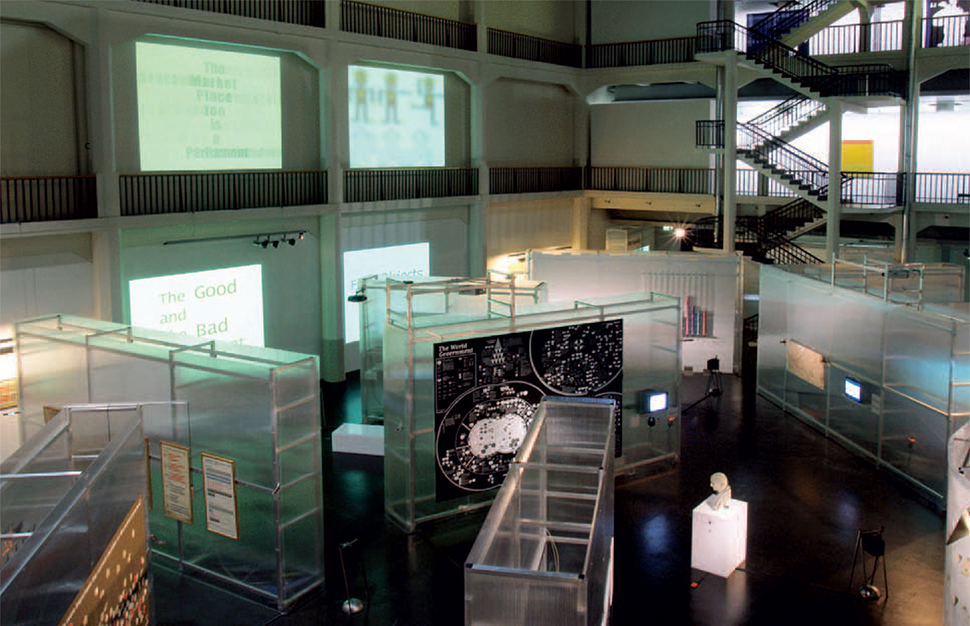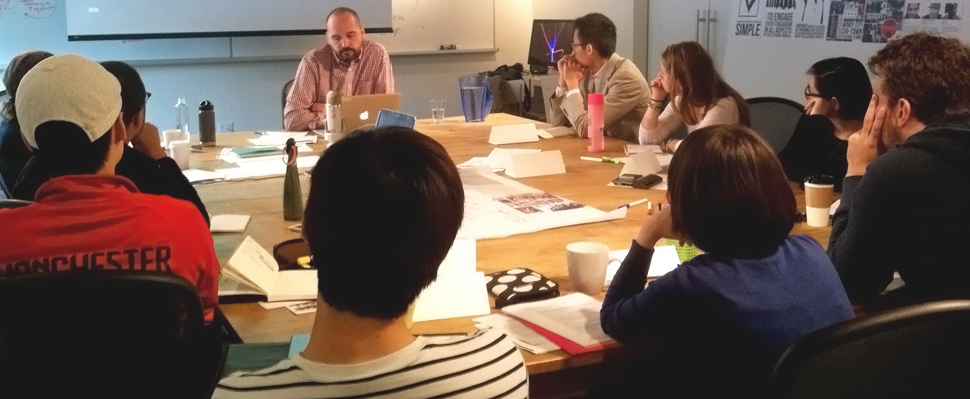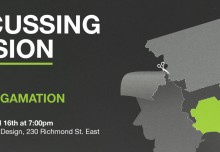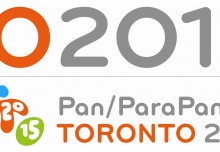The Experts and the Rest of Us
A response to the first in a series of Design Issues guest lectures at the IwB
Article by James Young, IwB student 2014-15 with a background in urban planning technology and a history of getting in over his head.The first thing I noticed about Patricio Davila was that he looks like the taller, darker, and more handsome brother of Karl Pilkington. The second thing I noticed about Patricio Davila was that he is no Idiot Abroad. The Price Award-winning Assistant Professor at OCAD University and doctoral candidate at Ryerson and York Universities’ joint Communication & Culture programme has a breadth of worldly knowledge achieved through his research in graphic design, interactive and locative media, and data visualization. He paid our studio a visit to discuss democracy as design (and/or design as democracy).
Patricio informed us that he planned to model his presentation in the style of Lev Manovich’s discussion through riffing. And riff he did. He riffed like rock guitarist with a classical pedigree and mad jazz chops. Patricio presented in a relaxed and conversational manner and employed words and terminology that were familiar, but his theoretical acumen enabled him to make connections and inferences and allusions that were out of reach for an academic tenderfoot such as myself. He spoke of the Chilean coup d’etat and juxtaposed it with another notorious Eleventh of September. He told us of his own family’s flight from Chile and segued into how a piece invisible theatre can create knowledge through experience by forcing a break with reality. Patricio took issues surrounding socialism, liberal democracy, the free market, and the fall of the age of rhetoric and braided them together before introducing us to Cybersyn—a cybernetic central control room which might have been borne from the imagination of Gene Roddenberry. Transparency, truth, accessibility, smartness, representation, and looking the part of government were all topics that Patricio touched upon as he began to open up the discussion to the table.
In an effort to engage, I found myself talking too much and saying too little. I’m not entirely certain if I was attempting to make comments or ask questions because I couldn’t manage to speak in anything other than sentence fragments. My mind could not wrap itself around the complexity of the ideas Patricio was putting forth, and I struggled even to express the fact that I was struggling.
It was not unsurprising that I found myself so hopelessly lost during Patricio’s lecture. The preparatory readings included a speech from German designer Gui Bonsiepe and From Realpolitik to Dingpolitik by French social scientist Bruno Latour. This was a poor augur for someone like me; a student having no academic experience with political theory or the philosophy of design. While I have a remote appreciation for the esoteric, I did not have the capacity to delve into the heady matters which Patricio so deftly navigated while weaving an intricate—yet for me, impenetrable—narrative.
Patricio’s unquestioned mastery of the subject material (he has literally achieved the degree of master in Communication & Culture) raised, for me, some interesting questions: How can I attain mastery and expertise in my own field and still be able to relate to the neophyte and layman?; Must accessibile experiences go hand-in-hand with inaccessible backends?; How do we design expertly for non-experts? Keeping these questions front-of-mind will be crucial in navigating the divisions between the experts and the rest of us as the Institute moves forward with our projects and charrettes.





